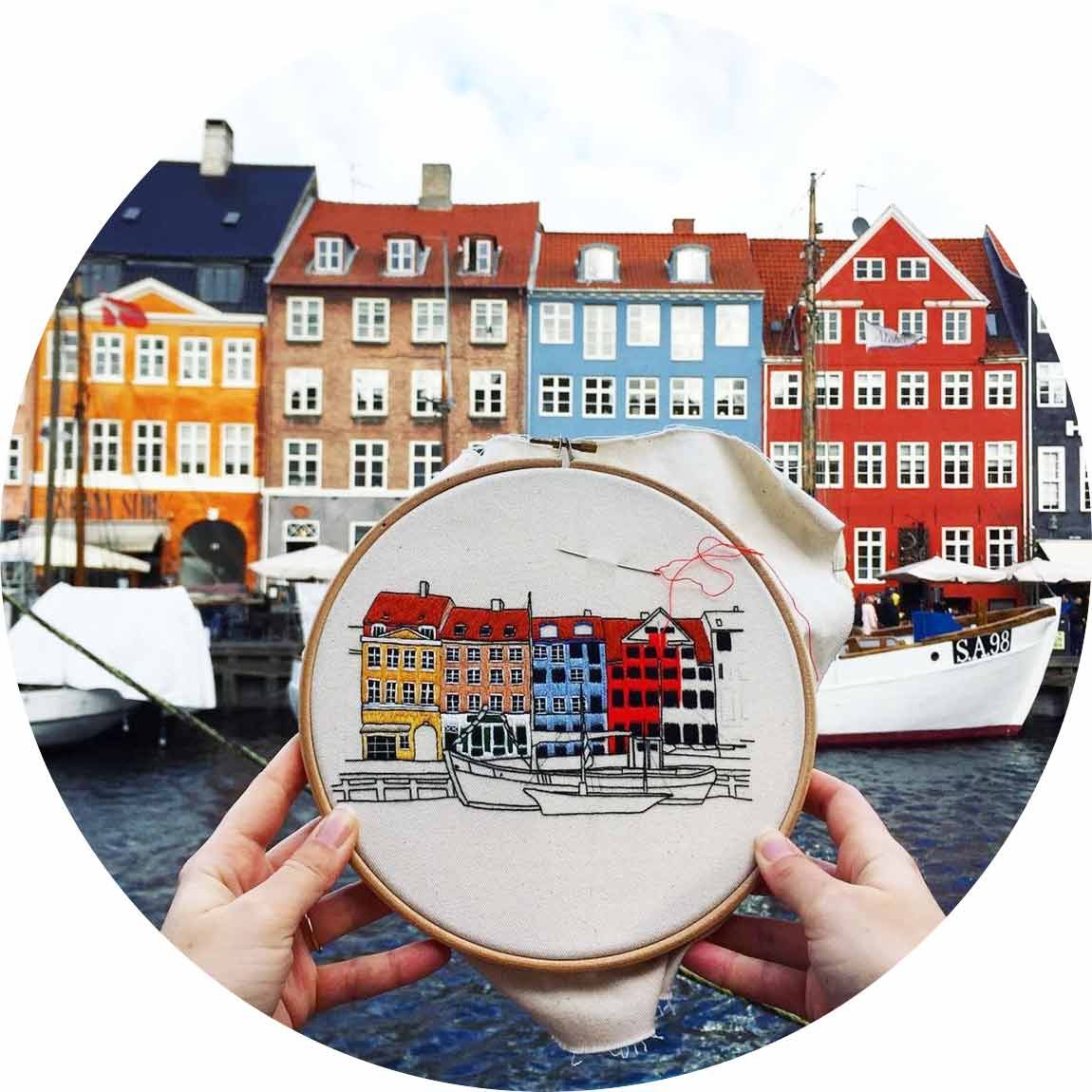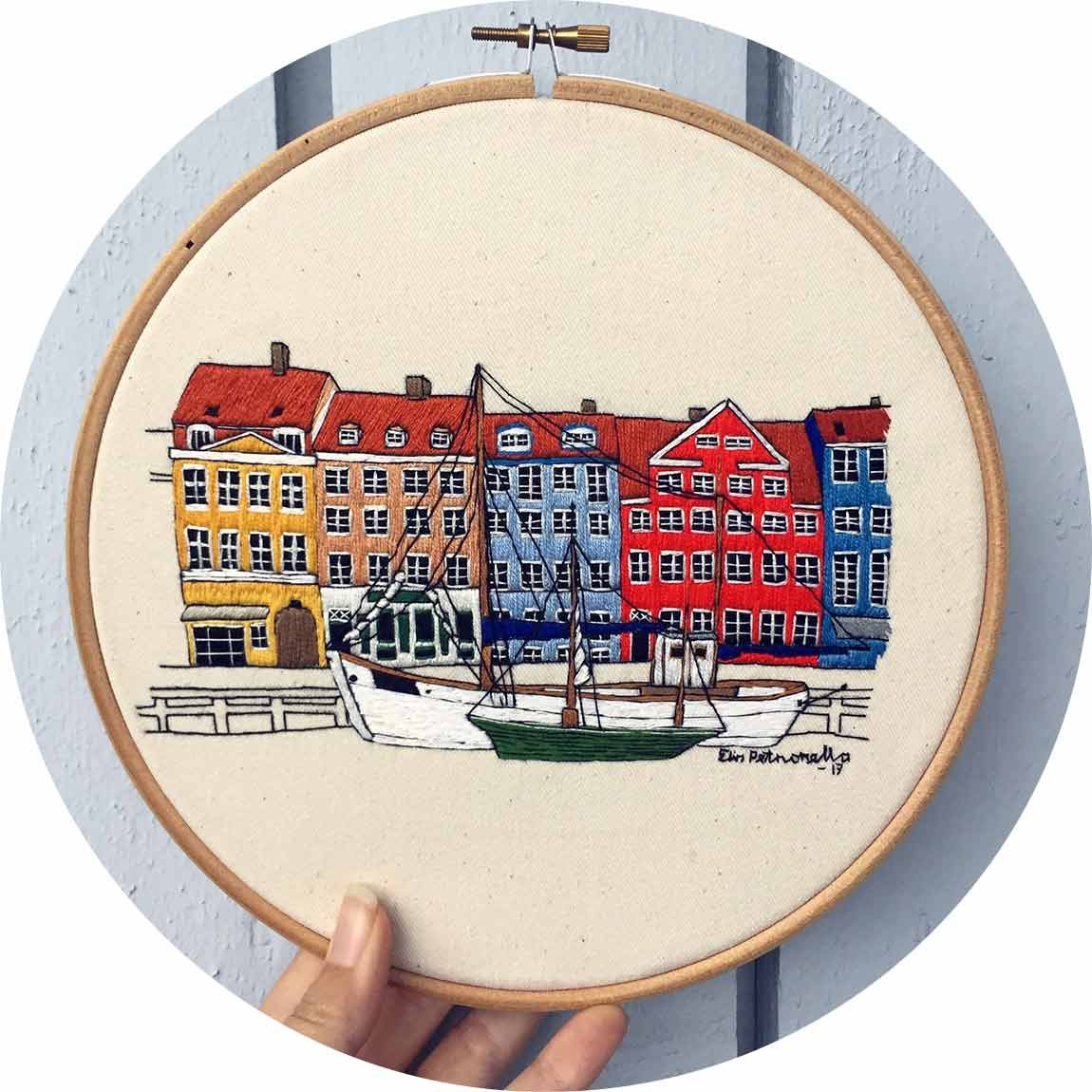Nyhavn, Copenhagen 🇩🇰
This hand embroidery pattern of Nyhavn Copenhagen fits perfectly into a hoop of 20cm (8") or larger. The pattern will be sent to your email as an instantly downloadable PDF immediately after purchase.
This hand embroidery pattern of Nyhavn Copenhagen fits perfectly into a hoop of 20cm (8") or larger. The pattern will be sent to your email as an instantly downloadable PDF immediately after purchase.
This hand embroidery pattern of Nyhavn Copenhagen fits perfectly into a hoop of 20cm (8") or larger. The pattern will be sent to your email as an instantly downloadable PDF immediately after purchase.
Story of the Nyhavn, Copenhagen design
This Nyhavn thread painting design is one of our most popular patterns and we understand why! The composition creates an intriguing depth, with the boats in the foreground, the key in the middle ground and the colorful houses in the background. Nyhavn is the iconic old harbor in the center of Copenhagen, Denmark. The oldest house on the key was built already 1681.
Today, it's a hot spot during the summer with lively cafés and restaurants. Furthermore, the cobblestone streets contribute to the charming atmosphere. However, Nyhavn hasn't always been an as happy place. It was first excavated by Swedish prisoners of war 1671-1673. The inauguration was held by Christian the fifth, king of Denmark and Norway until 1699. Thus, it's certainly a place filled with a rich history.
To be able to capture the small finer details, we've stitched this design with single or with two stranded threads. This is because with thinner thread you have more control of your stitches. Furthermore, you're able to make even smoother surfaces, which is one of the main characteristics of the thread painting technique. You're literally painting with thread, which puts emphasis on the direction and thickness of stitches, color choices and layer.
Considering the foreground, mid ground and background in this design, you will have to pay additional attention to what you stitch first. In other words, be sure to embroider the background first. Thereafter you stitch the boats and lastly the ropes for the sails. Thanks to the back stitch technique you can neatly capture the hanging effect of the ropes.
Embroidery stitches used in this pattern:
Back stitch
Satin stitch
Split stitch
You can learn how to embroider the above techniques in this article or via our free video stitch library Going Knots .
Materials you need to complete this embroidery design:
🖼️ Cotton canvas (or any non-stretch and non-transparent cotton fabric such as Duck canvas 7oz)
🖼️ Embroidery hoop of Xcm (x")
🎨Embroidery needle (We love to use 1-5 Bohin France or DMC needles)
🧵 Embroidery floss (DMC colour codes are indicated on your pattern pdf)
✂️ Scissor
📝 Carbon paper for transfer (Alternatively solvy paper, iron-on pen or any other transfer method of your preference)
🖊️ Pointy ball point pen
📏 Optional: Small ruler
Here is an article with more information about the various materials that we use.
BONUSES
→ Included in your pattern pdf is a video tutorial on how to transfer our architectural hand embroidery designs with carbon paper.
→ Upon purchase you will also receive an invitation to our supportive Private Facebook community that is available only for stitchers of our designs and courses.
Learn more with online courses
Are you keen to dive deeper into the Architectural hand embroidery style?
Then you’d want to have a look at our in depth Architectural hand embroidery and threadpainting courses on Charles and Elin Academy!
In addition to courses on Architectural designs we also offer other inspiring courses to support you on your exploration of modern hand embroidery.


